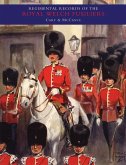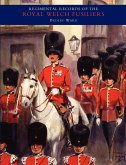This history is dedicated to The Royal Munster Fusiliers, in Glorious Memory of Their Illustrious Origin, The Bengal European Regiment, of whose Honour, Fame, and Decorations They are the Inheritors and Trusted Guardians. The origins of the regiment go back a hundred years before Plassey, to the very early days of the East India Company when each of the three Presidencies (Bengal, Madras and Bombay) had their own armies of Native and European troops. The latter were initially organised in companies and it was as a small guard of honour (an Ensign and thirty men) that the Bengal Regiment began life in 1652. This grew into several companies till 1756 when, under Clive's orders, they were grouped to form the regiment, then known as "The Bengal European Battalion." In 1839 a second Bengal European Regiment was formed so we now had the 1st and 2nd Regiments. In 1858 the Presidencies' European regiments were taken over by the Crown and the two Bengal regiments became 1st and 2nd Bengal Fusiliers, redesignated in 1861 as 101st Royal Bengal Fusiliers and the 104th Bengal Fusiliers. It was in 1881 they became 1st and 2nd Battalions The Royal Munster Fusiliers.This book really is an account of the conquest of India by the British. It opens in 1644 (back home the Civil War was at its height) with a look at the political causes which led to the formation of the regiment. The enemies were not only the Native Rulers but also the French, Portuguese, Dutch and Danes all of whom had to be dealt with - the most powerful being the French. The narrative covers all these events which involved the regiment in frequent fighting. At the beginning of the book is a list of the Regiment's war services from 1756 to 1858 - no less than 83 wars, battles and engagements, all are described in these pages and at the end of each chapter is a select list of references or bibliography. From time to time lists of officers serving in the regiment are given as are casualties in various actions. But it is not just war. There are interesting details on reorganisation, on pay and conditions of service, on dress and establishments, all making this a very comprehensive history.








